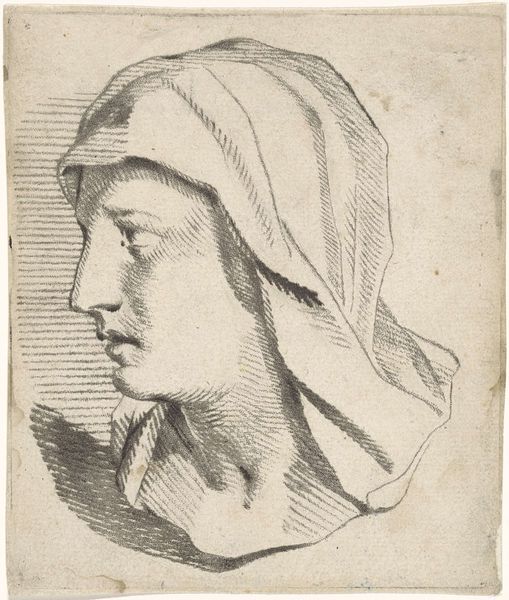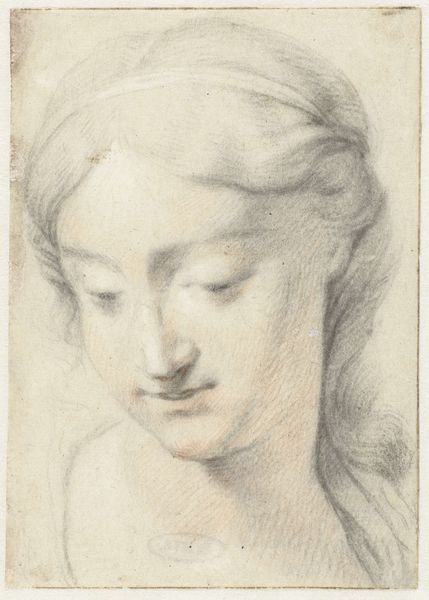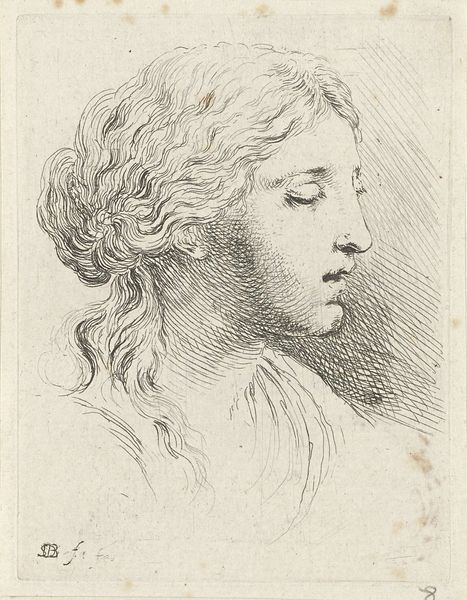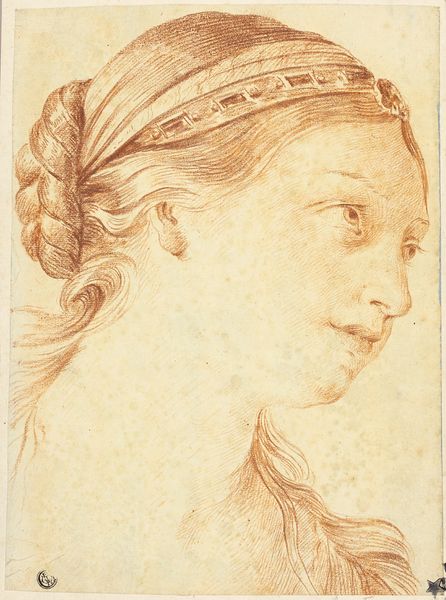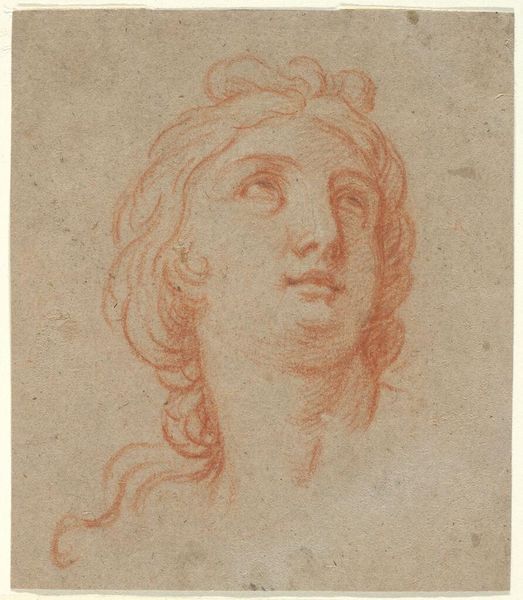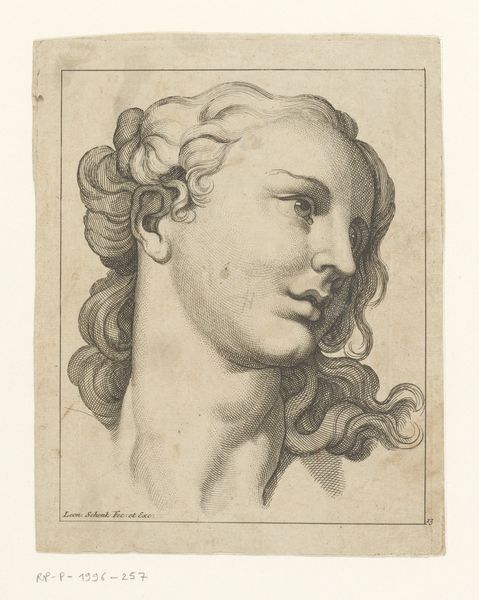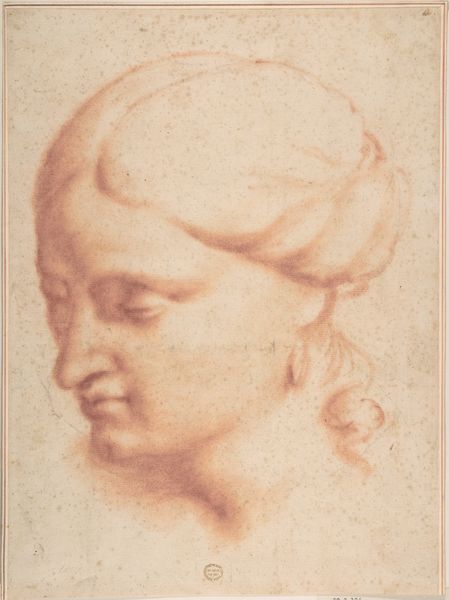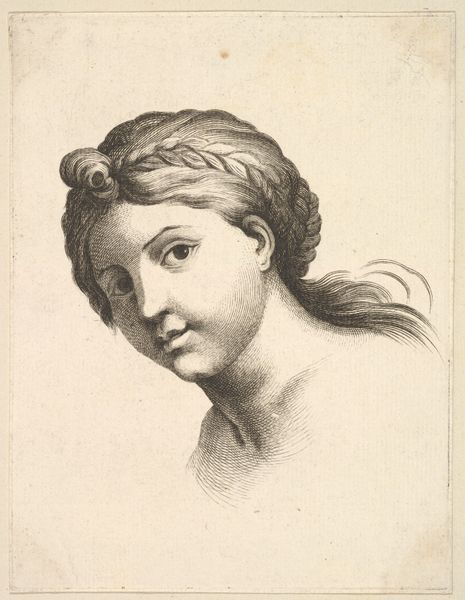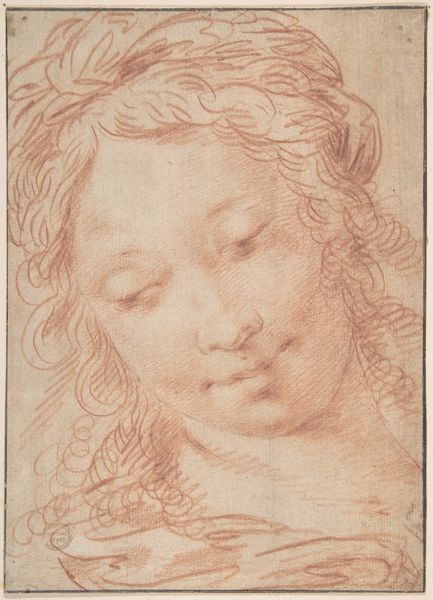
engraving
#
portrait
#
baroque
#
figuration
#
line
#
engraving
Dimensions: height 215 mm, width 150 mm
Copyright: Rijks Museum: Open Domain
Curator: Look at this, from our collection here at the Rijksmuseum: "Studie van een vrouwenhoofd," or "Study of a Woman's Head," an engraving created around 1725 by Bernard Picart. Editor: There’s a vulnerability that’s captured in the tilt of her head and averted gaze. It's almost melancholic, and it is incredible that this can be achieved simply with a line. Curator: It’s fascinating, isn’t it? The economy of line, the way Picart uses hatching and cross-hatching to create volume and shadow. It’s pure structure dictating form. The baroque dynamism restrained within the confines of line and form. Editor: Engraving demands such a mastery of craft. The artist would have used a burin to cut lines directly into the metal plate, which requires both intense pressure and careful handling of tools to avoid mistakes and achieve consistent effects. These tools shape more than just the image; they structure Picart’s production and the way viewers perceive and experience his art. Curator: Absolutely. And the printmaking process inherently creates a separation. We see the final image, but it hides the labour, the tools, and the processes used to create the metal matrix from which each image is derived. Editor: That tension between production and the final piece creates a really fascinating complexity, revealing layers of value, creation, and intention. Also, the line conveys so much despite being somewhat removed from his subject – a study taken after a drawing by Raphael. What were the print market conditions that demanded and enabled such reproductive works to flourish? Curator: A fascinating point. This work shows an elegant neoclassical ideal rendered in a clean, baroque style, demonstrating the way forms evolve through appropriation, technique and intention. The graphic element enhances our experience as if we are present, behind the creator. Editor: Absolutely. It serves as a testament to human touch, transforming vision and material into art, where each line tells a silent story of pressure, labor, and ultimately, intention. Curator: Indeed. It underscores the layered construction and intellectual process that informed art creation at this time. Editor: And highlights how crucial technique can be to expression.
Comments
No comments
Be the first to comment and join the conversation on the ultimate creative platform.
